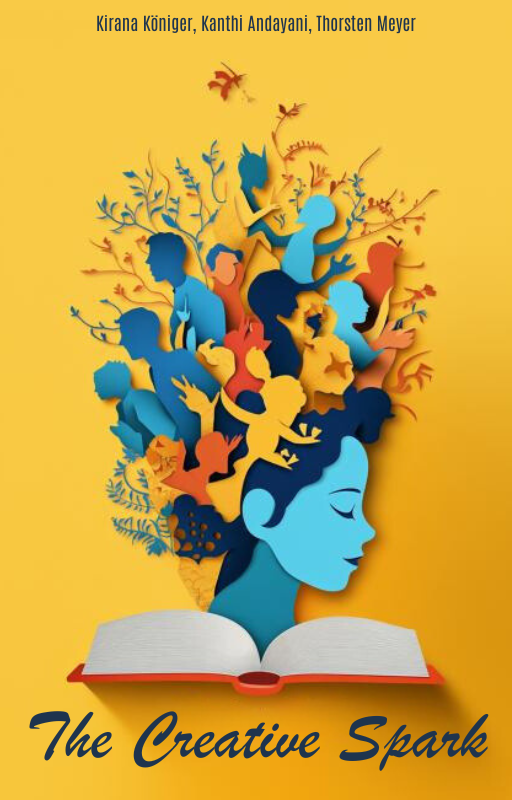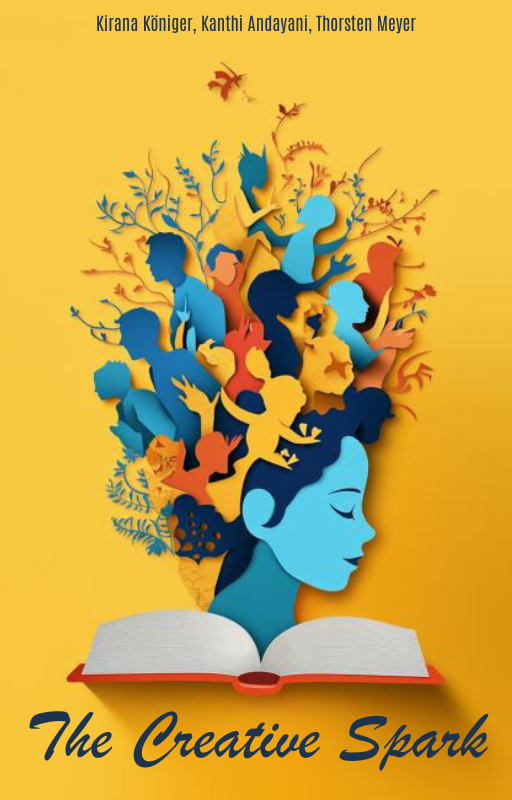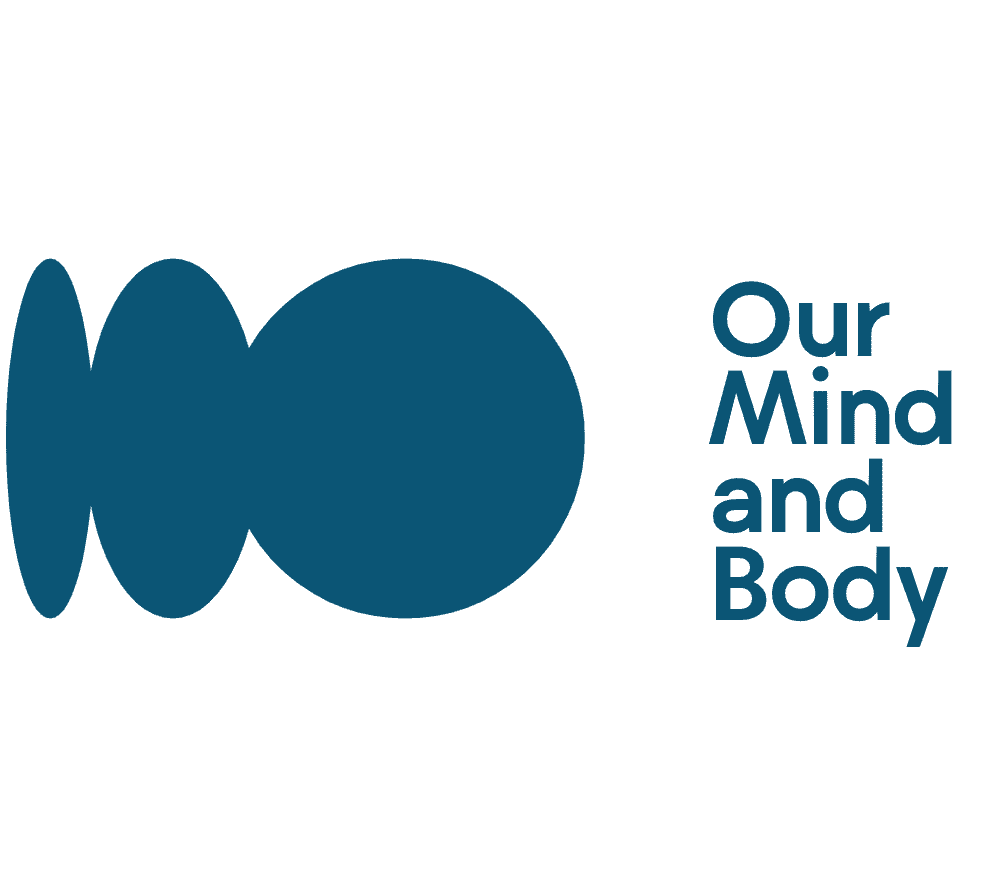Personal Growth
Unlock the Power of Tapping (EFT): Reduce Stress, Enhance Emotional Well-being, and Embrace an Abundant Life!

Tapping, also referred to as Emotional Freedom Technique (EFT), is a potent self-help method utilized for alleviating physical and emotional discomfort. This practice includes gently tapping on certain points of the body while concentrating on specific thoughts or emotions. Through this process, we are able to reach our subconscious mind and recalibrate it towards a more harmonious state. The ultimate objective is to release ourselves from harmful emotions that hinder us from enjoying a fulfilling life.
In essence, tapping works by helping us release stuck energy in our bodies which may be causing discomfort or limiting beliefs. Through this process, we can create positive changes in our lives without having to delve into deep psychological work. This simple practice has been proven effective for reducing stress, anxiety, depression and other forms of mental health issues.
By using tapping techniques regularly, we can become better equipped at handling difficult situations with ease and resilience. Instead of allowing emotionally charged experiences take over our lives, we can use tapping to stay grounded during times of difficulty and navigate through them with clarity and grace.
Techniques For Tapping
The rhythmic sound of tapping on the skin can be like a soothing rain to an emotional drought. It is often used as a way to release intense emotions and free oneself from inner turmoil. The practice of tapping, also known as Emotional Freedom Technique (EFT), has been gaining popularity for its ability to provide relief and promote emotional freedom.
Tapping techniques involve lightly tapping with fingertips on specific points of the body while focusing on certain thoughts or feelings that may be causing distress. These points are typically located near major organs in the body such as the head, chest and hands, but they can also include other areas too. Once these pressure points have been stimulated by tapping, it’s believed that energy pathways open up which helps to restore balance within the mind and body.
With regular practice, one can become more familiar with their own particular triggers and how best to cope with them using this simple yet powerful tool. Tapping releases blockages in our energy fields allowing us to gain clarity around our issues and move forward in life without being held back by old patterns or negative emotions. With consistent tapping practice, we can create space for new perspectives and approaches towards managing life’s challenges; ultimately leading us down a path of greater peace, joy and fulfillment.
Benefits Of Tapping
Tapping is a powerful technique that can be used to break free from emotional turmoil and find relief. It’s an effective way to address the challenges of life in a mindful, compassionate manner. By tapping on certain points on your body while focusing on specific emotions or thought patterns, you can relax both physically and mentally, allowing for deep healing and clarity.
The benefits of tapping are numerous: it reduces stress levels, promotes mental clarity, helps us process difficult emotions without getting overwhelmed by them, and even provides physical relaxation. Through this practice we can become more aware of our thoughts, feelings and beliefs about ourselves and our environment – allowing us to create healthier relationships with those around us as well as with ourselves. We can gain insight into how our minds work so that we have greater control over our reactions when faced with challenging situations.
In short, tapping offers many tools to support us in navigating through hard times. With regular practice we can build resilience and develop the ability to face life’s hurdles head-on in a way that honors who we are at our core.
Facing Challenges Head-On
Tackling life’s struggles isn’t easy, but it’s possible. Following a head-on approach is the best way to face challenges and deal with them effectively. Taking on problems one at a time can be daunting; however, by committing to tackling each obstacle that comes our way, we can slowly build our resilience and conquer whatever hardships come our way.
One of the most important aspects of overcoming obstacles is having an understanding of where they originate from. While some may blame external sources for their issues, looking within ourselves will often reveal what needs attention in order to move forward. It takes courage to confront internal stresses and anxieties but doing so allows us to shift our perspective and make changes necessary for progress.
What lies ahead in life cannot always be predicted or controlled; this makes taking responsibility for our own actions all the more crucial when dealing with difficulties. By being proactive instead of reactive, we allow ourselves room to grow while also building healthy coping mechanisms that help us stay balanced during tough times. To understand how stress affects us is to gain insight into how we can better manage it in the future.
Understanding The Source Of Stress
Stress is a natural response to life’s challenges, but it can also be caused by underlying issues that go beyond the immediate situation. It is important to identify and address these stressors if we want to effectively cope with our emotions. Understanding the sources of stress can help us better manage our reactions when faced with difficult situations.
The most common causes of stress include external pressures such as financial problems or relationship conflicts, as well as internal triggers like fear or anxiety. Stressful events can often lead to negative thoughts or feelings about ourselves and the world around us, which in turn create further emotional turmoil. We may also experience physical symptoms such as fatigue, headaches, muscle tension, or insomnia due to prolonged exposure to high levels of stress.
By understanding the root causes of our own personal stressors and triggers, we can begin to work through them instead of simply reacting emotionally. This starts with identifying the underlying issues behind each source so we can develop strategies for managing them more effectively. From there, it becomes possible to take proactive steps towards minimizing their impact on our lives and creating healthier coping mechanisms when they do arise.
Identifying negative emotions can provide insight into how best to respond in times of distress. With this awareness comes an opportunity for self-compassion and growth—a chance to accept our struggles while developing new ways of dealing with them proactively rather than letting them control us emotionally.
Identifying Negative Emotions
Tapping is an effective way to help us identify and process negative emotions. It can be used to free ourselves from the emotional turmoil that often keeps us stuck in unhealthy patterns of thought and behavior. By tapping on our body’s energy points, we are able to open up a dialogue between our conscious and subconscious minds, allowing us to more clearly recognize the source of our inner turmoil.
When we tap, it helps us become aware of any negative feelings or thoughts that may be causing distress. This awareness allows us to work through these issues with greater clarity and understanding. We can then begin to acknowledge what triggers our emotional responses so that we have more control over how we react in situations where those same triggers arise again.
It’s important for us to remember that identifying negative emotions does not mean wallowing in them or getting lost in self-pity. Instead, it gives us the opportunity to develop healthier coping strategies which will enable us to move past this current period of difficulty with grace and poise. With practice, we can learn how to better manage our emotions by recognizing when they start rising up within us and taking steps towards reducing anxiety through tapping as soon as possible.
Reducing Anxiety Through Tapping
In an age when anxiety levels are higher than ever, tapping is becoming a widely accepted technique to reduce emotional distress. As an ancient practice that has been around for centuries, it offers us the possibility of freeing ourselves from the turmoil inside our minds and hearts. Here are four ways in which we can use this powerful tool to help alleviate our anxious tendencies:
- Identifying Your Anxiety Triggers – By getting to know what sets off your anxiety, you will be better equipped to tackle it head on. Pay attention to how certain situations make you feel uncomfortable or stressed out and start working towards being mindful of these triggers so they don’t take over your life.
- Learning How To Breathe – Deep breathing exercises have been scientifically proven to reduce stress hormones like cortisol and adrenaline while improving circulation and oxygen flow throughout the body. This simple yet effective exercise helps bring balance back into your system by calming your mind down and allowing you to focus on one specific thought at a time rather than worrying about things beyond your control.
- Exploring Tapping Techniques – The goal here is to tap along with different points of contact in order to release any pent up emotions associated with whatever triggers your anxieties. Make sure that all movements are slow and deliberate as this allows you to become more aware of each individual point until finally everything melts away leaving only peace behind.
- Focusing On Positive Affirmations– Once you’ve identified what causes anxiety for you, create positive statements such as “I am strong enough to face my fears” or “I trust myself” that can help boost self-confidence whenever necessary. These affirmations should be repeated during times when negative thoughts begin creeping in; eventually leading them further away instead of letting them fester within us until we break down emotionally once again.
Tapping has long been used as a means of reducing stress, but its effectiveness goes far beyond just dealing with physical symptoms alone; it also works wonders on mental health issues like anxiety too! With regular practice, anyone can experience relief from their worries by channeling their energy into something productive rather than dwelling on past mistakes or stressful events that cannot be changed anymore anyway.
Adding Positive Affirmations
Now that we’ve discussed the power of tapping to reduce anxiety, let’s explore how positive affirmations can help us cope with life’s challenges. Positive affirmations are statements made in order to challenge negative beliefs and replace them with more helpful ones. With regular practice, these self-affirmations can have a powerful impact on our mental health and outlook on life.
| The following table summarizes some tips for using positive affirmations: | Strategy | Benefits | Examples |
|---|---|---|---|
| Speak out loud or write down your affirmation | Increased clarity and focus; build confidence | I am worthy of love; I am capable of achieving my goals; I’m doing the best I can today | |
| Repeat your affirmation throughout the day | Greater awareness of thought patterns; increased motivation and positivity | Every morning as soon as you wake up, say “I choose happiness” 10 times; Take time each day to repeat an affirmative phrase such as “I trust myself to make wise decisions” before going about your day | |
| Connect it to something meaningful or tangible | Strengthen connection between words and feelings or actions so they become part of who we are | Tie an affirmation to a physical object like wearing a bracelet that says “I am strong” or post notes around your house that read “Today is a good day” |
Practicing positive affirming phrases has been shown to be beneficial in improving moods by helping people shift their mindset from feeling helplessness into one of empowerment. It also helps foster greater levels of resilience when faced with difficult situations. The power of affirmations lies in their ability to rewire our thoughts and ultimately empower us through creating messages that support ourselves rather than tearing ourselves down. By developing this habit, we can free ourselves from emotional turmoil while gaining control over our lives. As we move forward towards releasing trapped emotions, it is important to remember that along with tapping techniques, adding positive affirmations can greatly benefit our journey towards finding peace within ourselves.
Releasing Trapped Emotions
As we traverse life’s challenging pathways, oftentimes our emotions become trapped in the trenches of our inner turmoil. They linger there like an invisible weight that cannot be lifted until they are released. Fortunately, a practice known as Emotional Freedom Technique (EFT) can help us free ourselves from these dark and heavy feelings.
The technique is simple yet powerful: you tap on certain parts of your body while repeating affirmations or mantras to acknowledge what you feel and release it from your system. It works by using the power of intention – when combined with physical touch-points – to create a positive outlet for negative energy and allow emotional freedom to shine through. By focusing on releasing trapped emotions, EFT helps give clarity and peace of mind to those who use it.
This process may sound intimidating at first, but with patience and dedication anyone can learn this method of self-care. There are many resources available online that provide step-by-step instructions for utilizing tapping techniques for emotional clearing; if practiced consistently, this type of mindful practice could eventually lead to lasting transformation within oneself. With greater understanding comes more confidence; the next section focuses on ways in which we can boost such confidence even further.
Boosting Self-Confidence
It’s true that life can be filled with obstacles, but learning how to tap into your inner strength and boost your self-confidence is an invaluable tool for conquering those challenges. Whether you are struggling with low self-esteem or just want to feel more empowered in different aspects of life, the key is to focus on increasing your feelings of worthiness and acceptance. Here are a few practical tips to get started:
- Take time out each day to practice relaxation techniques such as yoga or meditation. These activities can help reduce stress levels while also providing mental clarity.
- Make small changes in lifestyle choices like eating healthier foods or exercising regularly as these will help raise your energy levels and improve overall well being.
- Set positive affirmations for yourself – choose words that make you feel strong, capable, and confident about who you are and what you are doing in life.
Making these simple tweaks can have a lasting impact on your self-image, helping you move forward without fear or anxiety holding you back. It doesn’t matter if it takes some trial and error before finding success; the most important thing is that you keep trying until something works for you! With patience, determination, and dedication, anyone can increase their sense of self-worth and confidence — all it takes is willingness to put forth effort and believe in yourself!
Frequently Asked Questions
How Long Does It Take To See Results From Tapping?
Take it from Laura, an emotional trauma survivor: tapping has made a huge difference in her life. After years of struggling with overwhelming sadness and fear, she decided to give tapping a try. She was amazed at how quickly she started to feel calmer and more in control of her emotions. But the real question is – how long does it take for these results to manifest?
Tapping can be incredibly effective when it comes to reducing symptoms of emotional turmoil, but like any other therapeutic intervention, there is no set time frame for seeing results. It’s important to remember that everyone responds differently, so while some people may experience rapid improvement after just one session, others may need more consistent use over several weeks or months before they start to see positive changes. That said, many individuals report feeling better within minutes or hours after their first few sessions.
It’s also worth noting that the duration and effects of each tapping session depend on its intensity as well as how deeply you engage in the process. If you spend more time focusing on your negative thoughts and feelings during your session, then you will likely experience longer-lasting relief from the emotional distress associated with those specific memories or events. Additionally, if you are able to commit yourself fully to doing regular rounds of tapping every day – even for just 5-10 minutes – this can help create lasting change over time by helping wire new neural pathways which make it easier for you to cope with stressful situations without experiencing extreme levels of distress.
Overall, there is no definitive answer as far as how long it takes for someone to get relief from emotional turmoil through tapping; rather than setting expectations based on arbitrary timelines though, focus instead on committing yourself wholly and mindfully engaging with the practice itself so that you can reap all its potential benefits!
Is Tapping Safe For People With Mental Health Conditions?
I’m often asked if tapping is safe for people with mental health conditions. This is an important question as many of us seek out alternative ways to cope with emotional turmoil and manage stress in our lives. Tapping can be a powerful tool, but it’s important to understand the risks associated with using this technique when dealing with mental illness.
When used appropriately, tapping can provide relief from anxiety, depression, and other forms of emotional distress. However, like any therapy or intervention, there are potential risks involved that should be considered before starting a tapping practice. It’s essential to consult your doctor or therapist before beginning any new self-care routine involving tapping or another form of energy psychology modality. Your healthcare provider will help assess whether tapping is right for you based on your individual needs and circumstances.
Tapping may also have unintended consequences such as triggering uncomfortable emotions or memories that could worsen existing mental health issues without proper guidance from a professional. While some individuals find success using tapping to reduce symptoms of their condition, others report feeling overwhelmed by these intense emotions during the process. Whatever your experience may be, it’s important to remember that it’s normal and not necessarily indicative of how successful the technique might be for you in the long run.
No matter what type of challenge we face in life, accessing support from qualified professionals who can guide us through difficult times is always recommended over relying solely on self-help techniques like tapping – even when those techniques appear promising at first glance.
What Are Some Ways To Practice Tapping At Home?
Tapping is a simple but powerful technique that can help us cope with life’s challenges. Practicing tapping at home can provide many of the same benefits as in-person sessions, such as reducing stress levels and improving emotional well-being. To get started on this journey, here are some tips for how to practice tapping at home:
- Identify Your Goals: Before you begin, it’s important to take time to evaluate what it is that you want to achieve by practicing tapping at home. This could be anything from becoming more mindful and relaxed or addressing specific issues like anxiety or depression. Once you have identified your goals, it will be easier to focus your efforts while using tapping exercises.
- Learn About Tapping Techniques: Now that you know what you want out of your tapping practice, it’s time to start learning about different techniques and methods that can help you reach those goals. There are plenty of online resources available – including tutorials and videos – which can teach you basic tapping methods so that you can become familiar with the process before trying them out yourself.
- Practice Regularly: Just like any type of exercise program, consistency is key when it comes to reaping the full benefits of tapping. Aim to set aside a few minutes each day where you commit solely to practicing various tapping exercises until they feel natural. Doing this regularly will ensure that your skills improve over time and that positive changes occur quickly within your body and mind.
By following these steps, anyone can learn how to use tapping techniques effectively at home and reap all the amazing physical and mental health benefits associated with its regular practice!
Can Tapping Help To Increase Focus And Concentration?
Did you know that over 50% of adults in the U.S. experience difficulties with concentration and focus? Could tapping be a viable solution to this widespread issue? In this article, we’ll explore how tapping can help increase mental clarity and improve concentration levels.
Tapping is an ancient practice involving rhythmic stimulation of certain points on the body which helps to reduce stress and anxiety while increasing feelings of calmness and relaxation. It has been used for centuries as a healing modality but more recently it’s being utilized as a tool to boost productivity and enhance focus. Studies have shown that when done regularly, tapping can help people become better able to concentrate by reducing distractions and boosting their ability to stay focused on tasks at hand.
When tapped into properly, energy pathways throughout our bodies open up allowing us to access deeper states of relaxation and clarity enabling improved cognitive functioning. The process also encourages new neural pathways within the brain which increases alertness and attentiveness so that one can remain attentive for longer periods of time without feeling mentally exhausted or overwhelmed. Additionally, some research suggests that regular tapping sessions may even lead to increased creativity due to the increased level of mental clarity associated with the practice!
Overall, there’s no doubt about it – tapping is an incredibly powerful tool for improving focus & concentration. Not only does it promote deeper states of relaxation but it also boosts productivity & enhances creative thinking making it well worth trying out if you’re looking for ways to get ahead in life while managing your mental health too!
Are There Any Risks Associated With Tapping?
Tapping has become an increasingly popular way to manage emotional turmoil, but are there any risks associated with it? In order to gain a better understanding of tapping and the potential risks involved, it is important to consider both physical and psychological aspects.
When considering the physical risks associated with tapping, one must take into account that some practitioners may experience adverse reactions or side effects such as headaches, nausea, fatigue, dizziness or lightheadedness. It is also possible for individuals who engage in excessive tapping to develop skin irritation due to the constant contact between their hands and face. Additionally, those who practice tapping may be particularly vulnerable to developing carpal tunnel syndrome from overexertion.
In terms of mental health risks, it is essential to acknowledge that some people may find themselves overwhelmed by intense emotions while attempting to tap away their troubles. This can lead them down dangerous roads if they do not have proper support systems in place. Moreover, although rarer than physical risks, long-term psychological issues can arise when someone fails to monitor their progress during the course of treatment. For instance, a person could end up relying too heavily on tapping as a form of self-soothing without seeking professional help if needed.
Overall, it’s important to keep in mind that while tapping provides many benefits towards managing emotional turbulence and increasing focus and concentration – like any other forms of therapy – there are still certain inherent risks associated with its practice which must be acknowledged and discussed before engaging in activities related to this technique.
Conclusion
It’s no surprise that life can be difficult and stressful. But, with the right tools and techniques, we can manage our emotions and better cope with life’s challenges. Tapping is one such tool that has been gaining popularity in recent years due to its effectiveness in helping people release emotional turmoil.
The great news about tapping is it doesn’t take long for you to start seeing results. In fact, many people report feeling a shift after only a few minutes of practice. Furthermore, according to research studies conducted on veterans suffering from PTSD, 60% reported reduced symptoms after 12 weeks of consistent tapping sessions! That’s an impressive statistic that illustrates just how powerful this technique can be when used regularly.
Tapping isn’t just effective at managing mental health conditions; it also helps to improve focus and concentration as well. Plus, there are several ways to practice tapping at home – so you don’t have to worry about finding time or money for therapy appointments or classes. All in all, if you’re looking for an easy way to free yourself from emotional turbulence – tapping is definitely worth exploring!
Meet Kalinda, the passionate and visionary Editor-in-Chief of OurMindAndBody.com. Kalinda is a beacon of light in the realm of holistic well-being, and her mission is to positively impact the lives of others by inspiring them to embrace a healthier and more fulfilling lifestyle.
With a deep-rooted love for meditation, yoga, and spirituality, Kalinda’s journey toward self-discovery and personal growth started at a young age. She found solace and strength in these practices, which not only helped her cope with the challenges of life but also provided her with a profound sense of purpose. Eager to share the transformative power of these ancient disciplines, Kalinda embarked on a path to spread awareness and understanding.
Personal Growth
Book Review: “The Creative Spark: Unleashing Your Inner Artist”

Rediscovering Creativity in the Digital Age
In a world where digital distractions often overshadow our creative instincts, “The Creative Spark: Unleashing Your Inner Artist” emerges as a timely and empowering guide. Authored by Kirana Königer, Kanthi Andayani, and Thorsten Meyer, this book provides a comprehensive and accessible approach to reigniting the creative flame within each of us.
A Global Tapestry of Creative Wisdom
The authors draw on their diverse backgrounds—Indonesian roots, European influences, and global experiences—to weave a rich tapestry of creative insights. This multicultural perspective is not just a backdrop but the foundation of the book’s philosophy, which sees creativity as a universal language that transcends cultural and geographical boundaries.

Expanding the Boundaries of Creativity
“The Creative Spark” encourages readers to rethink creativity, moving beyond the traditional confines of the arts. The authors argue convincingly that creativity is a fundamental life skill, essential for problem-solving, personal growth, and professional success across all domains.
The Science of Creativity
Anchored in scientific research, the book explores:
- The neurological foundations of creativity
- The roles of different brain regions in creative thinking
- The impact of neuroplasticity on the development of creative skills
- How environment and lifestyle choices affect creative potential
Practical Exercises for Creative Development
Each chapter offers a variety of hands-on exercises designed to nurture creativity across different fields:
- Writing prompts to spark the imagination of aspiring authors
- Visual challenges for artists and designers
- Culinary experiments for food enthusiasts
- Mindfulness practices to enhance creative awareness
- Cross-disciplinary projects that blend multiple forms of artistic expression
Overcoming Creative Challenges
The book provides practical strategies for overcoming common obstacles in the creative process, including:
- Breaking through creative blocks and periods of stagnation
- Overcoming self-doubt and imposter syndrome
- Managing perfectionism and the fear of failure
- Balancing creative pursuits with everyday responsibilities
Creativity in the Digital Era
The authors thoughtfully examine how technology can both enhance and hinder creativity, discussing:
- The potential of digital tools to support creative processes
- Balancing digital and analog approaches to creativity
- Leveraging social media to share and promote creative work
- Addressing ethical considerations in the age of AI-generated art
A Journey of Self-Discovery
Throughout the book, the authors share personal stories from their own creative journeys, adding depth and relatability to the content. Readers are invited to embark on their own journey of self-discovery, guided by reflective questions and exercises designed to help uncover their unique creative strengths.
Critical Analysis
Strengths:
- A broad and inclusive approach that extends beyond traditional artistic boundaries
- A multicultural perspective offering a wealth of global insights
- A strong scientific foundation combined with practical applications
- An accessible tone that makes creativity approachable for all readers
Considerations:
- The broad scope of topics may be overwhelming for some readers
- Certain cultural references may resonate differently depending on the audience
- Some advanced readers may find familiar concepts, though they are presented with fresh insights
Conclusion: A Guide to Creative Renewal
“The Creative Spark: Unleashing Your Inner Artist” is more than just a guide to artistic expression—it’s a blueprint for living a more imaginative and fulfilling life. By redefining creativity as a core human trait, the authors offer a work that has the potential to transform not just how readers approach art, but how they approach life itself.
Rating: 4.85/5 stars
Highly recommended for its inclusive approach, scientific grounding, and transformative potential, “The Creative Spark” stands out as a valuable resource for anyone looking to reignite their creative passions and embrace a more inspired way of living.
Meet Nadi, the soulful writer and explorer of inner realms who graces OurMindAndBody.com with her profound insights and heartfelt wisdom. With a profound passion for mindfulness, meditation, and spiritual growth, Nadi weaves words that touch the hearts and minds of readers, leaving a lasting impact on their well-being journey.
Rooted in a background of philosophy and psychology, Nadi’s curiosity about the human mind and the mysteries of the soul led her on a transformative path of self-discovery. Drawn to the transformative power of mindfulness and meditation, she embarked on a quest to understand the intricacies of these practices, not only for her own growth but also to inspire others to embark on their own inner journeys.
Personal Growth
Clearing Brain Fog: Top Foods For Mental Clarity

Experiencing mental fog is like navigating through a dense forest without a map. It can be frustrating, exhausting, and hinder your ability to think clearly and be productive.
But fear not, because there is a way to clear the fog and regain mental clarity. By incorporating certain foods into your diet, you can nourish your brain and improve cognitive function.
In this article, we will explore the top foods that can help clear brain fog and enhance mental clarity.
Key Takeaways
- Brain fog is a state of mental confusion and exhaustion that hinders productivity and quality of life.
- Unhealthy eating habits cause inflammation and cognitive decline, while nutrient-rich foods repair cells and promote brain function.
- Blueberries, fatty fish, nuts, dark chocolate, leafy greens, turmeric, and green tea are foods that can improve brain health and clarity.
- A balanced diet with brain fog-fighting foods is crucial for mental clarity, and integrating these foods into your diet can help improve cognitive function and memory recall.
Top Brain Fog-Fighting Foods
I love incorporating these brain fog-fighting foods into my diet to improve my mental clarity and overall brain health.
Blueberries are a fantastic choice as they are rich in antioxidants, which prevent oxidative stress and inflammation in the brain. They also enhance memory function, making them a great addition to my daily routine.
Fatty fish, like salmon and sardines, are another favorite of mine. They contain omega-3 fatty acids that improve brain health, strengthen memory, and enhance cognitive function.
Nuts are a convenient and tasty option as they contain healthy fats, protein, and fiber, all of which contribute to improved cognitive functioning.
Dark chocolate, in moderation, is a delicious way to protect against oxidative damage and improve cognitive function with its flavonoids.
Leafy greens, such as spinach and kale, are nutritional powerhouses that provide vitamins and antioxidants to protect the brain.
Lastly, turmeric, with its anti-inflammatory and antioxidant properties, is excellent for improving memory function.
Incorporating these brain fog-fighting foods into my diet has made a noticeable difference in my mental clarity and overall brain health.
Importance of Nutrients
Nutrients from a balanced diet are vital for promoting brain health and enhancing cognitive function and memory recall. When it comes to clearing brain fog and improving mental clarity, certain nutrients play a key role.
Here are three essential nutrients that can help boost your brainpower:
-
Omega-3 Fatty Acids: These healthy fats found in fatty fish like salmon and sardines are crucial for brain health. They have been shown to improve memory and cognitive function, making them an excellent choice for combating brain fog.
-
Antioxidants: Foods rich in antioxidants, such as blueberries, protect the brain from oxidative stress and inflammation. They also enhance memory function, helping to clear mental fog.
-
Vitamin E: This powerful antioxidant found in nuts like almonds and sunflower seeds has been linked to improved cognitive functioning. Including these nutrient-rich foods in your diet can provide the essential vitamins and minerals needed for optimal brain health and mental clarity.
Gut Health and Cognitive Function
Improving gut health is crucial for enhancing cognitive function and promoting optimal brain function. The gut microbiome, which consists of trillions of microorganisms, plays a significant role in our overall health, including our mental well-being. Research has shown that a healthy gut contributes to emotional stability and cognitive capacity.
When the gut is filled with beneficial bacteria, it reduces anxiety and depression levels, leading to improved mental clarity. Incorporating whole foods into our diet is key to maintaining a healthy gut. Foods like fruits, vegetables, and whole grains are rich in fiber and essential nutrients that support gut health. Additionally, probiotic-rich foods like yogurt and kimchi can replenish the gut with beneficial bacteria.
By prioritizing gut health through a balanced diet, we can boost our cognitive function and experience greater mental clarity.
Effects of Diet on Sleep
Eating a balanced diet with nutrient-rich foods can positively impact sleep quality and duration. Poor diet choices, such as consuming excessive sugar and processed foods, can disrupt our natural sleeping habits, leaving us feeling fatigued and decreasing our cognitive function.
On the other hand, a diet that includes healthy fats and complex carbohydrates can improve our sleep. When we have sound slumber, we experience enhanced mental clarity and increased energy levels throughout the day.
Incorporating foods like blueberries, fatty fish, nuts, dark chocolate, leafy greens, turmeric, and green tea into our meals can help promote a restful night’s sleep. So, by making conscious choices about what we eat, we can improve both our diet and our sleep, leading to better mental clarity and overall well-being.
Blueberries: Memory Enhancer
Indulging in a handful of juicy blueberries is like unleashing a burst of sunshine in my mind. Their antioxidants work wonders in boosting my memory function. Blueberries are packed with antioxidants that help prevent oxidative stress and inflammation in the brain, ultimately enhancing memory function.
These little berries are also rich in flavonoids, which have been shown to improve cognitive function and protect against oxidative damage. Not only are blueberries delicious, but they are also a practical choice for improving mental clarity.
Whether enjoyed by themselves, added to a smoothie, or sprinkled on top of yogurt, incorporating blueberries into my diet is an easy and tasty way to support my brain health.
So, whenever I feel the fog rolling in, I reach for a handful of blueberries to give my memory a boost and clear away the mental haze.
Fatty Fish: Cognitive Booster
When I include fatty fish in my diet, I notice a significant boost in my cognitive abilities.
Fatty fish, such as salmon, trout, and sardines, are rich in omega-3 fatty acids, which are essential for brain health. These fatty acids help improve memory, enhance cognitive function, and even protect against age-related cognitive decline.
Research has shown that a regular intake of omega-3 fatty acids can improve attention, focus, and overall mental clarity. Additionally, the anti-inflammatory properties of omega-3s can reduce brain fog and promote a healthy brain.
Incorporating fatty fish into my meals not only provides me with a delicious and satisfying option but also supports my brain health and keeps my mind sharp.
Nuts: Brain Function Improvement
Including nuts in my diet has significantly improved my brain function and cognitive abilities. Nuts, such as almonds, walnuts, and cashews, are packed with healthy fats, protein, and fiber, all of which are essential for optimal brain functioning.
The healthy fats in nuts, including omega-3 fatty acids, help nourish the brain and support cognitive processes like memory and learning. Additionally, the protein in nuts provides a steady supply of amino acids that are necessary for neurotransmitter production, which influences mood and cognitive function.
The fiber in nuts helps regulate blood sugar levels, preventing energy crashes and promoting sustained mental clarity. I have found that incorporating a handful of nuts into my daily routine not only satisfies my snack cravings, but also boosts my brain power and enhances my overall cognitive performance.
Dark Chocolate: Cognitive Protection
Dark chocolate has been an essential part of my diet for its cognitive protection benefits. Not only is it delicious, but it also contains flavonoids that improve cognitive function and protect against oxidative damage. Flavonoids have been shown to enhance memory and attention, making dark chocolate a great choice for clearing brain fog and promoting mental clarity.
Studies have found that the antioxidants in dark chocolate can increase blood flow to the brain, which improves cognitive function. Additionally, dark chocolate has been linked to a reduction in inflammation in the body, including the brain, which can contribute to better mental health.
When choosing dark chocolate, aim for varieties with a high percentage of cocoa (70% or higher) to maximize the benefits. Remember to enjoy it in moderation as part of a balanced diet, as it is still high in calories.
So indulge in a small piece of dark chocolate to give your brain a boost and improve your mental clarity.
Frequently Asked Questions
How does brain fog affect productivity and quality of life?
Brain fog, like a dense fog over a city, impairs focus, memory, and energy levels, hindering productivity and diminishing quality of life. It’s crucial to address brain fog through a balanced diet and lifestyle choices for improved mental clarity.
Are there any other factors besides unhealthy eating habits that can cause brain fog?
Yes, besides unhealthy eating habits, other factors such as lack of sleep, chronic stress, hormonal imbalances, certain medications, and underlying medical conditions can also contribute to brain fog. It’s important to address these factors for improved mental clarity.
What are some nutrients that are essential for brain health and cognitive function?
Some essential nutrients for brain health and cognitive function include antioxidants from blueberries, omega-3 fatty acids from fatty fish, healthy fats from nuts, flavonoids from dark chocolate, vitamins from leafy greens, and anti-inflammatory properties from turmeric.
How does the gut microbiome affect emotional stability and cognitive capacity?
The gut microbiome plays a crucial role in emotional stability and cognitive capacity. Healthy gut organisms reduce anxiety and depression levels, while an imbalance can lead to mental health issues. Taking care of your gut health is essential for overall well-being.
Can a balanced diet with brain fog-fighting foods improve sleep quality?
Yes, a balanced diet with brain fog-fighting foods can improve sleep quality. A diet rich in healthy fats and complex carbs promotes sound slumber, leading to enhanced mental clarity and energy levels.
Conclusion
In conclusion, our brains deserve the best fuel to function at their peak. Just like a well-oiled machine, we can clear away the brain fog and unlock mental clarity with the power of food.
These brain fog-fighting foods are like superheroes, swooping in to save the day. Blueberries, fatty fish, nuts, dark chocolate – each one holds the key to unlocking our cognitive potential.
So let’s nourish our brains, fuel our minds, and banish brain fog for good. The power is in our hands, and on our plates.
Say hello to Cypress, the soulful wordsmith behind the insightful articles at OurMindAndBody.com. Cypress is a gifted writer who weaves words with grace and precision, using language as a powerful tool to inspire, heal, and uplift the spirits of readers.
With a background in literature and a passion for personal growth, Cypress brings a unique perspective to the world of well-being and spirituality. Having experienced the transformative effects of meditation and yoga firsthand, Cypress is deeply connected to the essence of these practices and their potential to enrich lives.
Personal Growth
Smart Investing: Maximizing Returns And Minimizing Risk

Sometimes fate has a funny way of guiding us towards what we really need. By pure chance, you have stumbled upon an article on smart investing – a topic that could potentially change the trajectory of your financial future.
Investing wisely is all about maximizing returns while minimizing risk, and it’s never too early to start. With the right knowledge, tools, and guidance, you can navigate the complex world of investments and make informed decisions that will lead to long-term success.
So, let’s dive in and explore the key principles of smart investing, shall we?
Key Takeaways
- Investing at a young age can lead to significant growth in account balance over time.
- Diversifying investments reduces risk and increases potential returns.
- Regularly monitoring investments and adjusting strategies based on market conditions is important.
- Understanding tax implications and implementing tax-efficient investment strategies can maximize returns.
What is Investing?
Investing is the process of allocating funds into different investment options with the goal of maximizing returns and minimizing risk. It involves carefully selecting investment instruments that have the potential to generate income or appreciate in value over time. By diversifying investments across various asset classes, such as stocks, bonds, and real estate, investors can reduce the risk associated with any single investment.
It is important to understand the merits and demerits of different investment options, as well as their tax implications. Regular monitoring of investments and staying updated on market trends is crucial for informed decision-making. Patience, discipline, and a realistic budget are essential for long-term investment success. Seeking mentorship or taking investment courses can provide valuable guidance in navigating the complex world of investing.
Starting Early
Beginning early in the world of finance is like planting a small seed that has the potential to grow into a mighty oak, providing shade and stability for years to come. When it comes to investing, starting early is crucial for maximizing returns and minimizing risk. Here are three reasons why:
-
Compounding Growth: Investing at a young age allows your money to grow exponentially over time. By starting early, you can take advantage of compounding, where your investments generate returns that are reinvested, leading to even higher returns in the future.
-
Financial Security: Early investments can minimize financial strain and stress in later years. By building a solid investment portfolio early on, you can create a cushion for future expenses, such as buying a house, starting a family, or funding your retirement.
-
Time to Learn and Recover: Starting early gives you ample time to learn about different investment options and strategies. It also provides a buffer to recover from any potential losses. With time on your side, you can take calculated risks, learn from your mistakes, and make informed investment decisions.
By starting early, you can set yourself up for long-term financial success and achieve your financial goals with greater ease.
Weighing Options
When it comes to choosing investment options, I consider the merits and demerits of different instruments before making a decision.
Retirement schemes offer stability but may have limited returns, while stocks provide income through buying and selling shares.
ETFs allow investors to purchase and sell stocks at listed prices, while bonds offer monthly or annual interest as a loan to a government or corporate entity.
Each investment instrument has its own advantages and disadvantages, and it’s important to weigh these factors carefully.
By diversifying investments across different asset classes, including real estate and international markets, I can reduce risk and increase potential returns.
A mix of stocks, bonds, and other assets is advisable for long-term success.
Ultimately, making a wise selection of investment options is crucial for maximizing returns and minimizing risk.
Getting an Account
Knowing where to go and which platforms to use for getting an investment account is crucial for me. With so many options available, it’s important to choose a trustworthy and cost-friendly platform.
One platform that stands out for beginners like me is Sofi Invest. Not only does it provide access to multiple investment opportunities, but it also offers valuable information on different types of investment accounts. This makes it easier for me to make informed decisions based on my financial goals and risk tolerance.
By using an online platform like Sofi Invest, I can easily manage my investments and track their performance. It’s reassuring to know that I have a reliable platform to rely on as I begin my investing journey.
Education and Mentorship
I believe that taking an investment course or finding a mentor would be beneficial for me to gain valuable insights and knowledge in the field of investing. Learning from successful investors can provide me with valuable tips and strategies that can help maximize my returns and minimize risks. Having a realistic budget for my initial investments is crucial, and starting small can be a viable approach. I can also borrow ideas from successful investors in my area of interest to further enhance my investment strategy. To grab the attention of the audience, I have created a table below that highlights the importance of education and mentorship in smart investing:
| Importance of Education and Mentorship |
|---|
| Gain valuable insights and knowledge |
| Learn from successful investors |
| Develop effective investment strategies |
| Minimize risks and maximize returns |
Taking the time to educate myself and seek mentorship will provide a strong foundation for my investment journey. It will equip me with the necessary tools and understanding to make informed decisions and navigate the complex world of investing.
Diversification
Diversifying my investments across different asset classes allows for a more balanced and potentially profitable portfolio. By spreading my investments, I can reduce the risk associated with any single investment and increase my potential returns. Here are four reasons why diversification is important:
-
Risk reduction: Spreading investments across various asset classes such as stocks, bonds, real estate, and international markets helps mitigate the risk associated with any one investment. If one asset class underperforms, the others may still provide positive returns.
-
Potential for higher returns: Different asset classes have varying levels of returns over time. By diversifying, I can take advantage of the potential growth in different sectors and markets, increasing the likelihood of achieving higher overall returns.
-
Protection against market volatility: By having a mix of investments, I can protect myself against market fluctuations. When one asset class experiences a downturn, others may be performing well, providing a cushion against losses.
-
Increased opportunities: Diversification opens up opportunities to invest in different industries, sectors, and geographical regions. This allows me to benefit from global exposure and take advantage of emerging markets or sectors that may offer higher growth potential.
Overall, diversification is a key strategy for maximizing returns and minimizing risk in my investment portfolio.
Understanding Risk and Reward
Understanding the relationship between risk and reward is crucial for making informed investment decisions. When it comes to investing, there is an inherent trade-off between the two.
Higher-risk investments have the potential for higher returns, but they also carry a greater chance of loss. On the other hand, lower-risk investments typically offer more stability but may have limited returns.
Assessing your risk tolerance is important before investing, as everyone’s comfort level with risk varies. By diversifying your investments across different asset classes and spreading your risk, you can both mitigate risk and increase potential returns.
Balancing risk and reward is key for long-term success in investing. Regularly monitoring your investments, staying updated on market trends, and adjusting your strategies accordingly will help you navigate the ever-changing investment landscape.
Seeking professional advice can also provide valuable insights and guidance.
Regular Monitoring
Regularly reviewing investment performance can help investors make informed decisions and take advantage of market opportunities. It is essential to monitor investments regularly to stay updated on market trends and news. By doing so, investors can adjust their investment strategies based on current market conditions.
Regularly reviewing investment performance allows for informed decision-making and helps investors identify any necessary adjustments to their portfolio. Additionally, seeking professional advice for investment monitoring can provide valuable insights and guidance.
Monitoring investments ensures that investors can stay on top of their financial goals and make necessary adjustments to maximize returns and minimize risk. In summary, regular monitoring is a crucial aspect of smart investing, enabling investors to make informed decisions and stay ahead of the market.
Markdown list:
- Stay updated on market trends and news
- Adjust investment strategies based on market conditions
- Seek professional advice for investment monitoring
Long-Term vs Short-Term
Moving on from the importance of regular monitoring, let’s now delve into the comparison between long-term investing and short-term trading.
Long-term investing involves holding investments for an extended period, allowing them to grow and compound over time. It is a more passive approach, suitable for investors looking for steady, consistent returns.
On the other hand, short-term trading involves buying and selling investments quickly to take advantage of short-lived market fluctuations. This approach requires active monitoring and quick decision-making. While short-term trading can potentially yield higher returns, it also comes with increased risk and requires a deeper understanding of market trends.
Both approaches have their advantages and disadvantages, and the choice between them depends on individual goals, risk tolerance, and investment strategy.
Tax Considerations
When it comes to tax considerations in investing, I always consult with a tax professional to ensure I have a clear understanding of the tax implications of different investment options. It is crucial to be aware of the tax treatment of each investment to maximize returns and minimize tax liabilities.
Here are a couple of key points to consider:
-
Different investment options have different tax treatments:
-
Stocks and bonds may be subject to capital gains tax when sold.
-
Dividends from stocks may be taxed at a different rate than interest income from bonds.
-
Retirement accounts such as IRAs or 401(k)s offer tax advantages like tax-deferred growth or tax-free withdrawals, depending on the type.
-
Tax-efficient investment strategies can maximize returns:
-
Utilizing tax-advantaged accounts can help minimize taxes on investment earnings.
-
Tax-loss harvesting, where you sell investments at a loss to offset capital gains, can reduce your overall tax liability.
By understanding the tax implications and implementing tax-efficient strategies, I aim to optimize my investment returns while staying compliant with tax regulations.
Importance of Patience
To achieve long-term investment success, I have learned that patience is a crucial virtue. It is important to resist the temptation of making impulsive decisions based on short-term market fluctuations. Instead, I have found that sticking to a well-defined investment plan and maintaining a consistent approach is key.
By avoiding emotional reactions to market ups and downs, I can make informed decisions that align with my long-term goals. Patience allows me to ride out the inevitable market volatility and stay focused on the bigger picture. It also helps me avoid unnecessary stress and panic, which can lead to poor investment choices.
Ultimately, patience and discipline contribute to maximizing returns and minimizing risk in the world of investing.
Frequently Asked Questions
How do I determine my risk tolerance when investing?
To determine my risk tolerance when investing, I assess my financial goals, time horizon, and comfort level with volatility. I consider my willingness to take on risk, my ability to handle potential losses, and my overall investment objectives.
What are some common mistakes to avoid when starting to invest?
When starting to invest, it’s important to avoid common mistakes such as not conducting thorough research, investing without a plan, letting emotions drive decisions, not diversifying, and neglecting to regularly monitor and adjust investments.
Are there any investment options that can provide both stability and high returns?
Yes, there are investment options that can provide both stability and high returns. Some examples include dividend-paying stocks, real estate investment trusts (REITs), and certain bond funds. It’s important to research and assess the risk before investing.
How can I determine if a specific investment platform is trustworthy?
To determine if a specific investment platform is trustworthy, I would research its reputation, read reviews from other investors, and check if it is regulated by reputable financial authorities. Additionally, I would look for transparency, security measures, and customer support options.
What are some strategies for minimizing taxes on investment gains?
To minimize taxes on investment gains, I recommend utilizing tax-efficient investment strategies, such as investing in tax-advantaged accounts like IRAs or 401(k)s, harvesting tax losses, and holding investments for longer periods to qualify for lower capital gains tax rates.
Conclusion
In conclusion, smart investing is all about maximizing returns and minimizing risk. It’s about starting early and making wise choices. It’s about diversifying investments and regularly monitoring their performance. It’s about considering tax implications and being patient for long-term success.
But let’s be honest, who has the time or energy for all that? It’s just so much easier to let someone else handle it and hope for the best. So, why bother with all this smart investing stuff when you can just cross your fingers and hope for a lucky break?
Say hello to Cypress, the soulful wordsmith behind the insightful articles at OurMindAndBody.com. Cypress is a gifted writer who weaves words with grace and precision, using language as a powerful tool to inspire, heal, and uplift the spirits of readers.
With a background in literature and a passion for personal growth, Cypress brings a unique perspective to the world of well-being and spirituality. Having experienced the transformative effects of meditation and yoga firsthand, Cypress is deeply connected to the essence of these practices and their potential to enrich lives.
-

 Spirituality3 months ago
Spirituality3 months agoHow to Learn About Spiritual Energy: A Beginner's Guide!
-

 Spirituality3 months ago
Spirituality3 months agoHow to Keep Your Spiritual Energy High: Stay Vibrant!
-

 Spirituality3 months ago
Spirituality3 months agoHow to Increase Your Spiritual Energy: Simple and Effective Ways!
-

 Angel Numbers3 months ago
Angel Numbers3 months agoHow to Manifest When Seeing Angel Numbers
-

 Angel Numbers3 months ago
Angel Numbers3 months agoHow to Meditate on Angel Numbers
-

 Spirituality3 months ago
Spirituality3 months agoHow to Know if You Have High Spiritual Energy: Signs and Tips!
-

 Personal Growth3 months ago
Personal Growth3 months agoBook Review: “The Creative Spark: Unleashing Your Inner Artist”
-

 Angel Numbers3 months ago
Angel Numbers3 months agoHow to Choose the Right Angel Numbers













